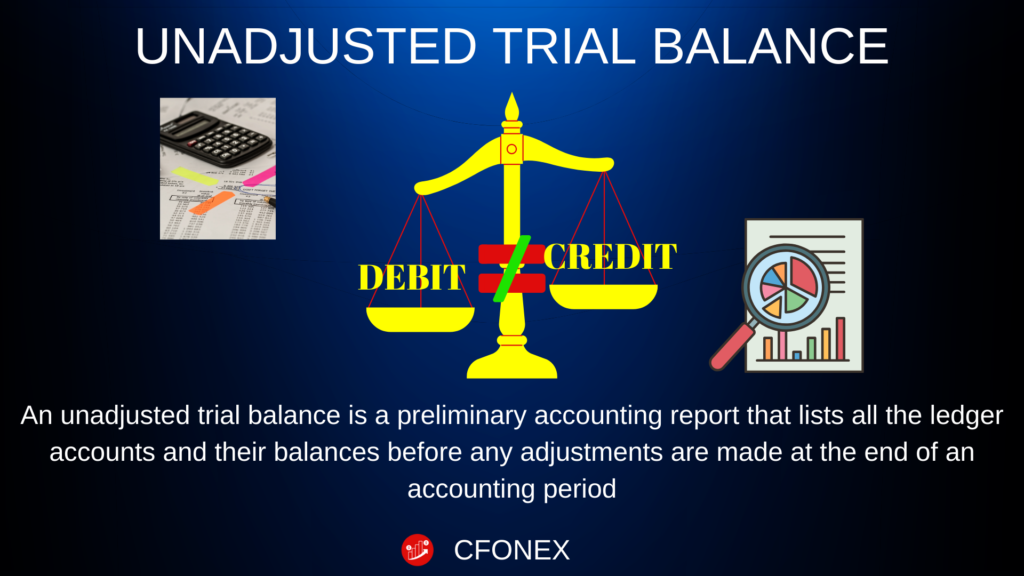An unadjusted trial balance is a preliminary accounting report that lists all the ledger accounts and their balances before any adjustments are made at the end of an accounting period.

What is Unadjusted Trial Balance?
An unadjusted trial balance is a preliminary accounting report that lists all the ledger accounts and their balances before any adjustments are made at the end of an accounting period. Its primary purpose is to ensure that the total debits equal the total credits, which helps to identify any discrepancies or errors in the recording of financial transactions.
Key Features of an Unadjusted Trial Balance
- List of Accounts: It includes all accounts from the general ledger, categorized into debits and credits. Common account categories are assets, liabilities, equity, revenue, and expenses.
- Pre-Adjustment Data: The balances shown are those recorded up to the end of the accounting period before any adjustments for accruals, deferrals, or other necessary corrections are made.
- Debits and Credits: Each account balance is listed in either the debit column or the credit column. Debits typically include assets and expenses, while credits include liabilities, equity, and revenue.
- Balance Check: The total of the debit column should equal the total of the credit column. This balance is crucial for the integrity of the accounting records. If the totals do not match, it indicates there may be errors in the recording of transactions.
Purpose of an Unadjusted Trial Balance
- Error Detection: It helps in detecting errors in recording transactions, as it highlights discrepancies between debits and credits.
- Preparation for Adjustments: It serves as a basis for making necessary adjusting entries. These adjustments are needed to account for accrued revenues, expenses, and other items that were not recorded during the period.
- Financial Statement Preparation: It is a preliminary step before preparing the adjusted trial balance and the final financial statements (income statement, balance sheet, etc.).
Example
Here’s an illustrative example of an unadjusted trial balance:
| Account | Debit ($) | Credit ($) |
|---|---|---|
| Cash | 10,000 | |
| Accounts Receivable | 5,000 | |
| Supplies | 1,500 | |
| Accounts Payable | 3,000 | |
| Service Revenue | 7,000 | |
| Salaries Expense | 2,000 | |
| Capital | 6,500 | |
| Total | 18,500 | 16,500 |
In this example:
- Total Debits: $18,500
- Total Credits: $16,500
Since the totals don’t match, this suggests there might be errors or omissions that need to be addressed before proceeding with adjustments and finalizing the financial statements.
Preparation Steps
- Collect Data: Gather the ending balances of all accounts from the general ledger.
- List Accounts: Create a list of all accounts and their respective balances.
- Enter Balances: Record each account balance in either the debit or credit column.
- Calculate Totals: Sum the amounts in both columns and check for balance.
The unadjusted trial balance is a crucial step in the accounting cycle, ensuring that the accounts are accurate and ready for adjustments and final financial reporting.
Leave a Reply